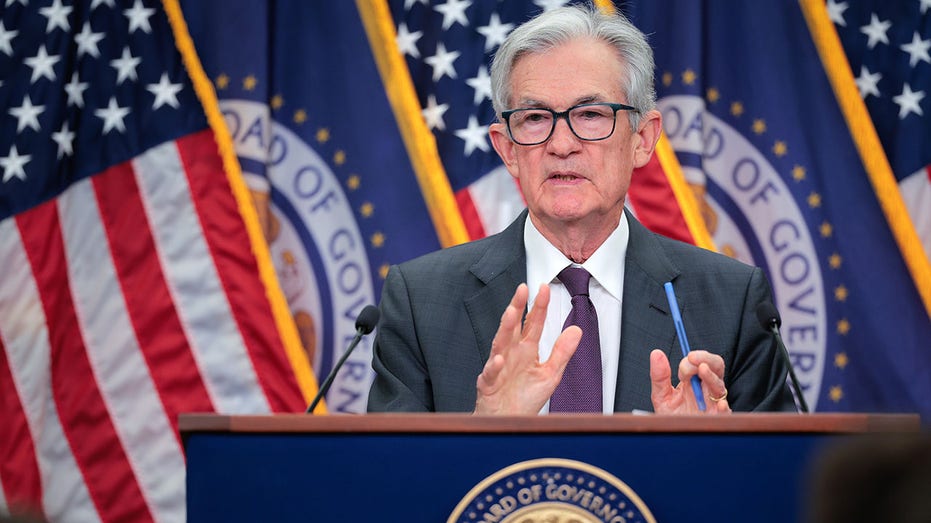Inflation rose in August and remained well above the Federal Reserve’s target rate as central bank policymakers weigh potential interest rate cuts at their meeting next week.
The Bureau of Labor Statistics on Thursday said that the consumer price index (CPI) – a broad measure of how much everyday goods like gasoline, groceries and rent cost – rose 0.4% in August compared with last month, while it rose to 2.9% on a year-over-year basis.
The monthly figure was hotter than the estimate of economists polled by LSEG, while the year-over-year figure was in line with expectations.
So-called core prices, which exclude volatile measurements of gasoline and food to better assess price growth trends, were up 0.3% from the prior month and 3.1% from a year ago. Both figures were in line with economists’ expectations.
HASSETT SAYS HE SUPPORTS FEDERAL RESERVE INDEPENDENCE AMID TRUMP ADMIN’S RATE CUT PUSH
High inflation has created severe financial pressures in recent years for most U.S. households, which are forced to pay more for everyday necessities like food and rent. Price hikes are particularly difficult for lower-income Americans, because they tend to spend more of their already-stretched paychecks on necessities and have less flexibility to save money.
Food prices rose 0.5% in August, as the food at home index jumped 0.6% and the food away from index increased 0.3%. Over the last year, the overall food index is up 3.2%, with food at home up 2.7% and food away from home at 3.9%.
Egg prices were flat in August after seeing price declines the prior three months, after prices rose rapidly last year due to an avian flu outbreak. The index for meats, poultry and fish rose 1.1% on a monthly basis and is up 5.4% from a year ago. Dairy prices rose 0.1% in August and are 1.3% higher than last year. The fruits and vegetables index rose 1.6% in August and is 1.9% higher than last year.
HOMEOWNERS’ WEALTH MAY BE SHRINKING AS PRICE GAINS LAG INFLATION
Housing prices rose 0.4% in August and are 3.6% higher than a year ago. The shelter index was the main driver of the increase in the all-items index.
Energy costs increased 0.7% last month and are up 0.2% from a year ago. Gasoline prices increased 1.9% in August but are down 6.6% compared with last year. Electricity costs fell 0.1% in August but are up 6.2% from a year ago.
Transportation costs increased 1% on a monthly basis and are 3.5% higher than a year ago. Auto maintenance and repair costs increased 2.4% in August and are up 8.5% compared with last year. Airline fares rose 5.9% last month and are 3.3% higher than at this time last year.
Apparel prices jumped 0.5% in August and are up 0.2% from a year ago, while footwear costs fell 0.4% for the month and are 1.4% higher than last year.
Tools, hardware, outdoor equipment and supplies increased 0.8% in August and are 3.9% higher than last year. Furniture and bedding costs rose 0.3% in August and are up 4.7% from last year.
FED CHAIR JEROME POWELL SIGNALS JOB MARKET, INFLATION OUTLOOK COULD ALLOW FOR INTEREST RATE CUT

The August CPI report comes as the Federal Reserve is weighing a potential interest rate cut at its meeting next week. Central bank policymakers will weigh signs of a weakening labor market against inflation that remains well above its 2% target rate amid signs that tariffs are pushing prices higher.
Fed Chair Jerome Powell said in his speech at the central bank’s annual Jackson Hole conference last month that the downside risk to the labor market could outweigh the upside risk to inflation, opening the door for policymakers to cut interest rates.
“Right now, inflation is a key subplot, but the labor market is still the main story,” said Ellen Zentner, chief economic strategist for Morgan Stanley Wealth Management. “Today’s CPI may appear to offset yesterday’s PPI, but it wasn’t hot enough to distract the Fed from the softening jobs picture. That translates into a rate cut next week – and, likely, more to come.”
“In today’s numbers, we are seeing some impact from tariffs, especially with higher prices on cars and clothes,” said Jeffrey Roach, chief economist for LPL Financial. “The hot inflation print will not likely change the Fed’s plan to cut rates in September, but it’s possible the Fed will hold in October if inflation expectations no longer look well-contained.”
The market has priced in a Fed rate cut at next week’s meeting, with the CME FedWatch tool showing a 90.8% chance of a 25-basis-point cut and a 9.2% probability of a 50-basis-point cut.
Read the full article here











